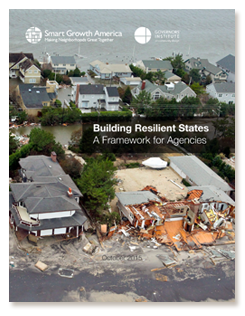Storms, floods, droughts, landslides, and wildfires have affected thousands of individuals, families, businesses, and communities across the United States in recent years. 2012 stands out as particularly devastating. Hurricane Sandy received much attention but a total of 28 states had federal major disaster declarations that year.
Many other disasters, emergencies, fire management situations, and other significant events that did not qualify for a Presidential declaration. And unfortunately, the frequency and severity of extreme weather events is only expected to increase in years to come.
States have a unique stake in disaster preparedness and recovery. Disasters can cost states billions of dollars, and they are always a crucial player in post-disaster clean up and recovery efforts. Yet the states vary widely in their readiness to face disasters. States could save a lot of time, money, and lives by being better prepared. Rather than focusing solely on disaster recovery, states can and should plan for long-term resilience to natural disasters and adapt to a changing environment. States can influence this in a number of ways:
- Play a significant role in deciding how and where development occurs;
- Establish guidelines for local land use plans;
- Design, build, and fund critical infrastructure, such as roads, utilities, and water systems;
- Fund and approve the siting of hospitals, schools, and state government buildings and facilities;
- Set guidelines for construction of state-subsidized housing;
- Control conservation funding and oversee environmental remediation;
- Provide tools and expertise, such as hazard mapping and long-term planning capacities, to local governments;
- Disburse federal resources; and
- Build local capacity and commitment to disaster resilience.
These activities represent an enormous opportunity for states to improve their resilience in the face of disaster.
Governors can move to ensure that these and other state actions not only carry out their intended purposes (economic development, transportation infrastructure, improved housing, etc.) but also contribute to a state’s overall resilience and long-term economic and social well-being.

